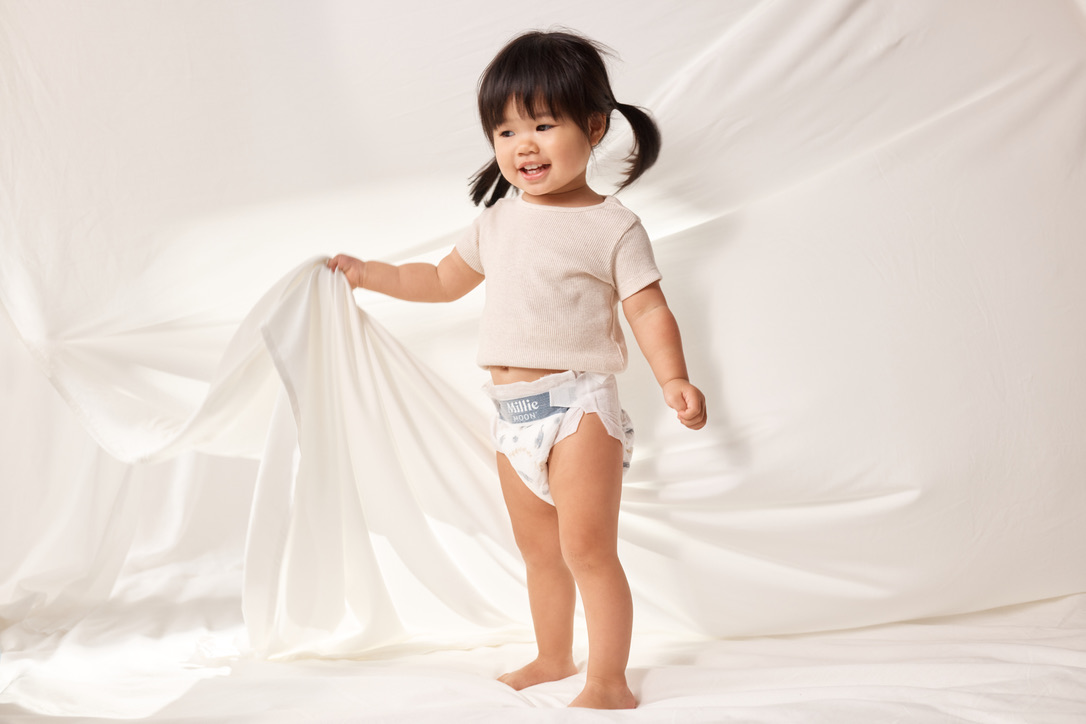Guide On How Often To Change Baby’s Diaper:
The frequency of changing a baby’s diaper depends on several factors, including the baby’s age, feeding schedule, and whether they have a bowel movement or wet diaper. Here are some general guidelines:
General Recommendations:
-
Newborns (0-3 Months):
- Feeding Frequency: Newborns eat often, leading to more frequent urination and potential bowel movements. Change diapers after every feeding initially, adjusting based on wetness cues. Overnight changes might be needed once, but be prepared for more based on feeding patterns.
- Stool Consistency: Meconium (newborn stool) is sticky and infrequent. As breastmilk or formula intake increases, stools become more frequent and watery. Change immediately after bowel movements to prevent irritation.
- Sleep Patterns: Most newborns sleep longer stretches at night, but monitor for wetness or discomfort if they cry. One nighttime change may suffice, but be prepared for more depending on their sleep and feeding habits.
Infants (4-12 Months):
- Developmental Milestones: As babies become more active, their fluid intake and urination increase. Monitor wetness more frequently, aiming for changes every 3-4 hours during the day, but adjust based on their activity level and wetness cues.
- Solid Food Introduction: Introducing solids can change stool frequency and consistency. Be mindful of additional changes after solid meals and monitor for constipation or diarrhea, which might require more frequent attention.
- Daytime Potty Training: If you’re starting potty training, diaper changes might become need-based instead of time-based. Watch for squatting or fussiness as cues to offer the potty.
Toddlers (1-3 Years):

- Potty Training Progress: As potty training progresses, diaper changes become more infrequent. Offer frequent potty breaks and change diapers upon waking, before bed, and after accidents.
- Fluid Intake: Monitor fluid intake, especially during hot weather or playtime. Increased thirst or sweat levels might necessitate more frequent changes.
- Overnight Wetness: Some toddlers still need nighttime changes. Opt for overnight diapers or adjust frequency based on morning wetness.
Beyond the General Rule:
-
Frequency:
- Urine Output Patterns: Track your baby’s wet diapers throughout the day. If they consistently feel heavy or wet within a short period, consider more frequent changes. Conversely, if diapers remain mostly dry for longer stretches, you might extend the interval.
- Bowel Movement Rhythms: Pay attention to the frequency and consistency of stool. Loose stools or diarrhea warrant immediate changes, while infrequent, formed stools might allow for longer intervals. Adjust based on your baby’s typical patterns and any changes you observe.
- Growth Spurts and Development: These periods can temporarily impact bladder and bowel control. Be prepared for temporary adjustments in diaper frequency as your baby experiences new milestones.
Type of Diaper:
- Absorption Capacity: Disposable diapers come in various absorbency levels. Choose diapers that match your baby’s output. For example, overnight diapers offer higher absorbency for longer wear, while daytime diapers might suffice for frequent urination.
- Material Preference: Consider your baby’s skin sensitivity and environmental preferences. Cloth diapers require more frequent changes but offer a more eco-friendly option. Experiment with different materials to find one that suits your baby’s comfort and your sustainability goals.
Skin Sensitivity:
- Proactive Prevention: Frequent changes and gentle wipes help prevent diaper rash, especially for sensitive skin. Consider hypoallergenic wipes and barrier creams to protect delicate skin.
- Monitor Redness and Irritation: If you notice redness or irritation, even with frequent changes, you might need to switch to a different diaper brand, material, or wipes. Consult your pediatrician if the rash persists.
Baby’s Cues:
- Beyond Fussiness: While fussiness is a common sign, observe other non-verbal cues like leg crossing, arching their back, or changes in their usual playfulness. These can indicate discomfort from a wet or dirty diaper.
- Sleep Disruptions: If your baby wakes up frequently at night, check for a wet diaper before assuming hunger or another issue. Early intervention can prevent further sleep disruptions.
- Contentment as a Guide: A happy and content baby is usually a good indicator that their diaper needs are met. Use their overall demeanor as a gauge alongside other cues.
Beyond the Basics: Unveiling Additional Diapering Tips for Happy Bums
While the mentioned tips provide a solid foundation, let’s delve deeper into additional strategies to optimize your diapering experience:
Cleaning Techniques:
- Warm Water Power: Opt for warm water instead of hot water to cleanse the diaper area. Harsh water temperatures can irritate delicate skin.
- Gentle Touch: Use a soft washcloth or gentle wipes. Avoid harsh rubbing, especially if your baby has sensitive skin.
- Pat Dry Thoroughly: Moisture buildup can contribute to diaper rash. Pat the area dry with a soft towel, paying attention to creases and folds.
- Barrier Cream Benefits: Consider using a barrier cream after cleaning and drying, especially if your baby is prone to diaper rash. Choose a zinc oxide-based cream for maximum protection.
Diapering Logistics:
- Organization is Key: Create a designated diapering station with all the essentials readily available. This includes diapers, wipes, cream, a clean changing pad, and a disposal bin.
- Travel Essentials: Pack a portable changing pad and a diaper bag stocked with enough supplies for outings and travel. Include wipes, cream, and disposable bags for soiled diapers.
- Disposal Options: Consider your preferred disposal method. Some opt for traditional diaper pails, while others choose flushable diapers or reusable cloth diapers with designated liners. Choose an option that aligns with your preferences and environmental considerations.
Diaper Rash Management:
- Prevention is Key: Frequent changes, proper cleaning, and barrier creams can go a long way in preventing diaper rash.
- Yeast Infection Awareness: If your baby develops a persistent rash with red, bumpy patches, consult your pediatrician as it might be a yeast infection requiring specific treatment.
- Air Out Time: Allow your baby some diaper-free time whenever possible to promote air circulation and healing. Lay them on a clean blanket or waterproof changing pad during these periods.
Sustainability Initiatives:
- Cloth Diapers: If you’re environmentally conscious, consider cloth diapers. While requiring more effort in terms of washing and maintenance, they’re a reusable option that reduces waste.
- Biodegradable Disposable Diapers: Explore biodegradable or plant-based disposable diapers as an alternative to traditional options. These diapers might be slightly more expensive but offer a more eco-friendly choice.
- Recycling Programs: Some diaper brands offer recycling programs for used diapers and wipes. Research available options in your area and contribute to waste reduction efforts.
Personalizing Your Approach:
Remember, every baby is unique and their diapering needs may vary. These guidelines are a starting point, and it’s important to adapt them based on your baby’s individual cues and comfort level. Here are some ways to personalize your approach:
- Track diapering habits: Keep a log of diaper changes, wetness levels, and stool consistency for a week or two. This can help identify patterns and adjust your approach accordingly.
- Consider developmental stages: Diapering needs shift as your baby grows. Adjust frequency and size based on milestones like increased activity or starting potty training.
- Observe your baby’s cues: Learn your baby’s non-verbal communication. Fussiness, leg crossing, or a wet feeling around the diaper are often indicators of discomfort.
- Consult your pediatrician: If you have any concerns about your baby’s diapering needs, stool consistency, or potential skin irritation, consult your doctor for personalized advice.
By combining these general recommendations with personalized adaptations and close observation of your baby, you can develop a diapering routine that keeps your little one comfortable and happy.


